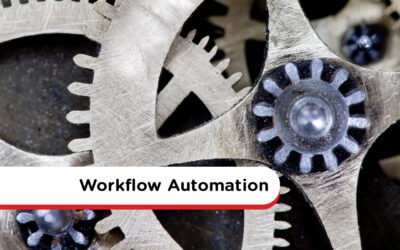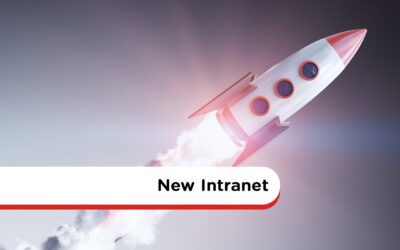Intranet Design Services
Choose from the self-build option with our support or work with one of our designers who will create a customized, fully-functioning intranet for your business, in 40 days or less, guaranteed!
The Challenge: Lack Of Time
You’ve defined your requirements and you know MyHub can deliver the outcomes you’re looking for. But do you lack the time and resources to customize your MyHub intranet site and get it launched on time?
The Solution: We Do It For You
By engaging with one of our designers, we’ll remove all of the complexity and risk by doing it all for you.
Planning For Success
Your MyHub intranet designer will lead the engagement process and ensure you’re updated on progress. The process is broken down into three key stages including:

Scope & Commercials
- Gathering requirements
- Defining launch objectives and timelines
- Developing a site plan including key pages, modules and content
- Agreeing the scope of works, pricing and terms.

Site Design
- Adding a company logo and changing site color options
- Designing and adding pages
- Adding content to pages including images, news articles, text, video and forms
- Adding folders and files to the Document Exchange
- Adding users to the site, Role Groups and Roles

Launch
- Handover and training
- Post-launch support
- Free site audit at any time
MyHub Designers, Delivering Great Outcomes
Intranet Design Articles
Work From Home Policy – With PDF Sample Template
The widespread shift to home-based work during the pandemic has led organizations to recognize remote and hybrid work as permanent fixtures in modern working life. A formal work-from-home policy is now a necessity—not a luxury—enabling clarity between employer and employee on expectations, rights, and performance standards.
This article outlines the six critical steps in crafting an effective policy: define clear objectives and scope (such as fully remote vs hybrid use), establish eligibility criteria, set communication and work-hour expectations, and specify technical support, equipment provisions, and expense arrangements. It also includes vital sections on cybersecurity protocols, approvals process, and social support to address remote isolation.
By implementing a structured WFH policy, companies can safeguard sensitive data, boost productivity, reduce overhead, and improve employee well-being. Remote workers benefit from greater clarity on equipment allowances, tech support, and workspace setup guidance, while employers protect their interests and strengthen recruitment and retention in an increasingly flexible work landscape.
6 HR Workflow Automation Best Practices for a More Productive Team
Human resources (HR) teams are at the core of every organization. They’re responsible for everything from recruitment and employee onboarding to payroll processing and compliance management. However, many of these processes are...
Signs of Bullying at Work – Workplace Bullying Examples
Workplace bullying can often be subtle but deeply harmful. This article outlines seven key indicators—verbal abuse, persistent criticism, social or professional isolation, excessive monitoring, sabotage, physical intimidation, and cyberbullying—that signal an unhealthy work dynamic. Recognizing these patterns is essential for individuals to understand when casual conflict escalates into sustained mistreatment.
Early warning signs—like name-calling, snide remarks, or being excluded from meetings—can escalate if unchecked. Persistent criticism or micromanagement is more than feedback; it’s about control and diminishing someone’s confidence. Sabotage—whether withholding key information or setting unrealistic expectations—can undermine performance and create failure traps.
Bullying isn’t limited to offline behavior. Physical threats or aggressive gestures, though rarer, pose serious safety concerns. Cyberbullying—harassment via email, messaging apps, or social platforms—is increasingly prevalent and damaging. The article emphasizes that intermittent episodes don’t constitute bullying; it’s the persistent, ongoing pattern that causes real harm.
15 New Intranet Launch Ideas
Launching a new intranet isn’t simply a technical rollout—it requires a vibrant launch campaign to generate excitement and drive user adoption. This post from MyHub outlines 15 fresh, practical strategies that engage employees before, during, and after the launch. The emphasis is on people-focused tactics—not just features—to ensure the intranet becomes a part of daily workflow.
Before launch, efforts such as identifying intranet ambassadors, running teaser campaigns, and featuring a naming competition help build momentum. These pre-launch tactics appeal to emotional investment—exciting employees about what’s coming and how the intranet will improve their work lives. During launch day, strategies include live demos, Q&A sessions, training events, and gamified elements like badges and leaderboards to encourage engagement from day one.
Post-launch activities focus on sustaining momentum: onboarding guides, ice-breaker challenges, feedback surveys, recognition campaigns, and periodic “intranet champions” push messages. With the right mix of anticipation, engagement, and follow‑through, MyHub shows organizations can transform their new intranet from a tool into a thriving digital community.
Meeting Minutes: Sample, Format, How To Write
Effective meeting minutes serve as a concise, factual record of discussions, decisions, action items, and next steps. They help teams remember key takeaways, assign accountability, and support legal or compliance auditing—especially valuable for board meetings or multi-department gatherings.
The blog recommends starting with the meeting agenda to structure your notes, checking expectations with the facilitator, leveraging voice recordings when available, and sticking to past-tense, objective summaries rather than personal comments. Using a consistent template covering date, time, participants, agenda items, decisions, action points, and next meeting details ensures clarity and completeness .
Additional advice includes proofreading for consistency in tense and formatting, assigning tasks to named individuals with deadlines, and circulating minutes quickly to maintain relevance. Templates for board, team, and one-on-one meetings are provided in both Word and PDF formats to simplify adoption.
Intranet Security: How Secure Is Your Company Intranet?
A company intranet may feel like a secure, private network, but it’s still vulnerable to both external and internal threats. Malware, phishing, and unauthorized access can infiltrate through neglect or outdated protection. Meanwhile, insider issues—like weak passwords, human error, and over-permissive access—cause around 82% of data breaches.
To help fortify your intranet, start with key security measures: a robust firewall, antivirus protection, and SSL encryption to protect data in transit. Additionally, enforce strong authentication through SSO, Multi-Factor Authentication (MFA), and directory protocols like LDAP. Regular patching and updating of software close known vulnerabilities.
Successful intranet security requires an ongoing, multi-layered strategy. Limit and review user access based on roles, promptly revoke access during offboarding, and monitor connectivity—especially on personal devices. Incorporate security awareness training and simulated phishing exercises to empower employees against threats. Engage trusted hosted intranet providers who offer automatic updates, backups, and professional oversight.







